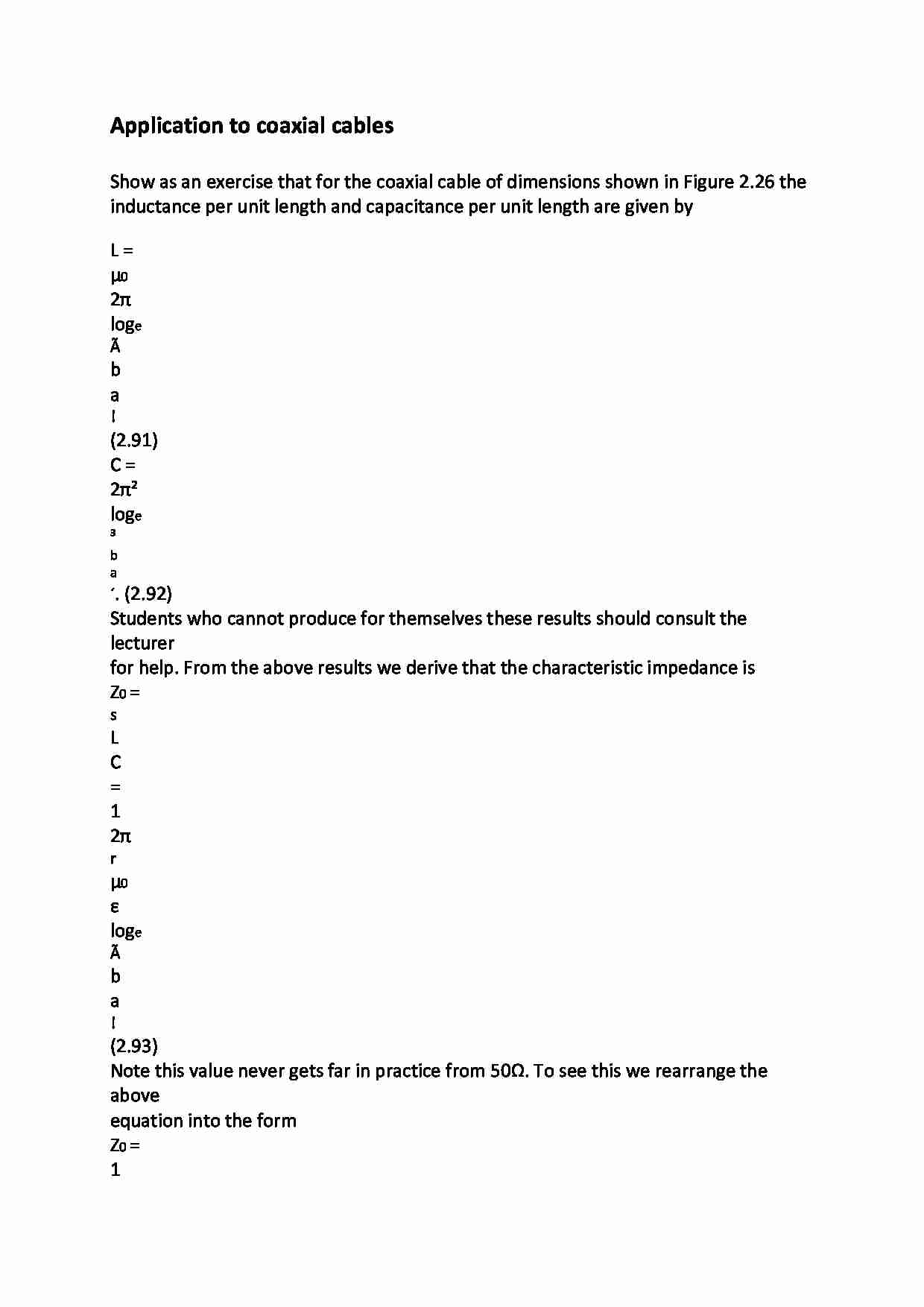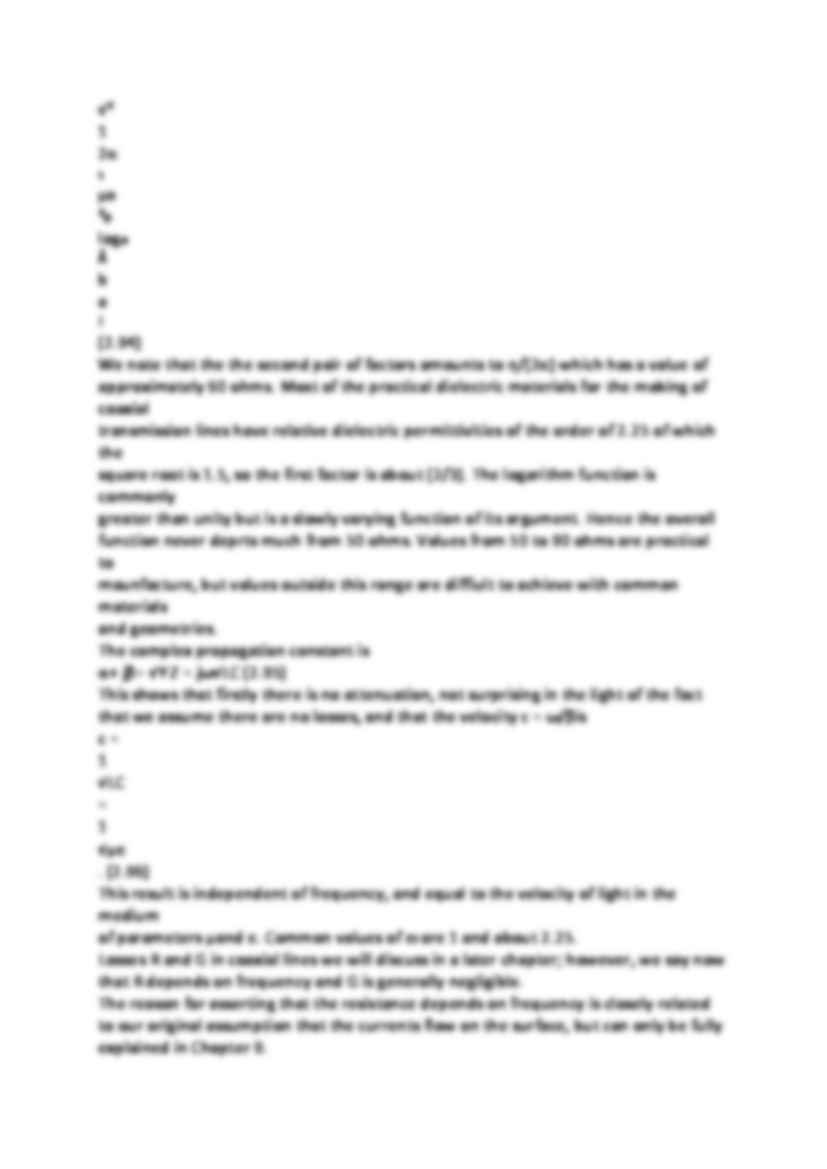To tylko jedna z 3 stron tej notatki. Zaloguj się aby zobaczyć ten dokument.
Zobacz
całą notatkę



Application to coaxial cabl es Show as an exercise that for the coaxial cable of dimensions shown in Figure 2.26 the
inductance per unit length and capacitance per unit length are given by
L =
μ0
2π
loge
Ã
b
a
!
(2.91)
C =
2π²
loge
³
b
a
´. (2.92)
Students who cannot produce for themselves these results should consult the lecturer
for help. From the above results we derive that the characteristic impedance is
Z0 =
s
L
C
=
1
2π
r
μ0
ε
loge
Ã
b
a
!
(2.93)
Note this value never gets far in practice from 50Ω. To see this we rearrange the above
equation into the form
Z0 =
1
√²
1
2π
s
μ0
²0
loge
Ã
b
a
!
(2.94)
We note that the the second pair of factors amounts to η/(2π) which has a value of
approximately 60 ohms. Most of the practical dielectric materials for the making of coaxial
transmission lines have relative dielectric permittivities of the order of 2.25 of which the
square root is 1.5, so the first factor is about (2/3). The logarithm function is commonly
greater than unity but is a slowly varying function of its argument. Hence the overall
function never deprts much from 50 ohms. Values from 50 to 90 ohms are practical to
maunfacture, but values outside this range are diffiult to achieve with common materials
and geometries.
The complex propagation constant is
α + jβ = √Y Z = jω√LC (2.95)
This shows that firstly there is no attenuation, not surprising in the light of the fact
that we assume there are no losses, and that the velocity c = ω/β is
c =
1
√LC
=
1
√με
. (2.96)
This result is independent of frequency, and equal to the velocity of light in the medium
of parameters μ and ε. Common values of εr are 1 and about 2.25.
Losses R and G in coaxial lines we will discuss in a later chapter; however, we say now
that R depends on frequency and G is generally negligible.
The reason for asserting that the resistance depends on frequency is closely related
to our original assumption that the currents flow on the surface, but can only be fully
explained in Chapter 9.
... zobacz całą notatkę






Komentarze użytkowników (0)